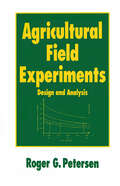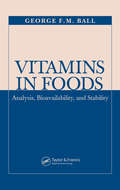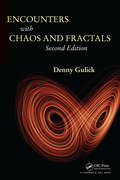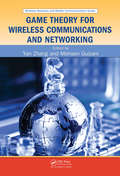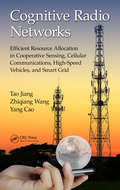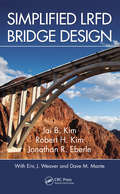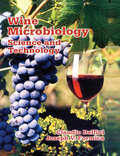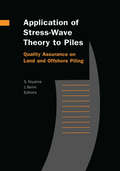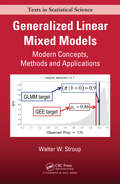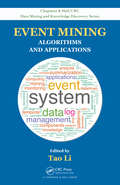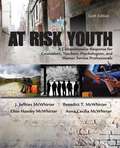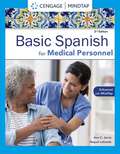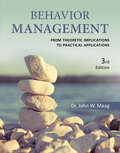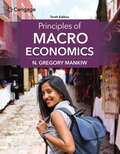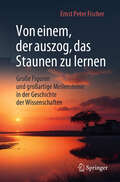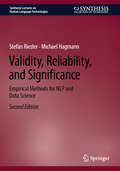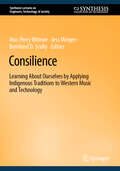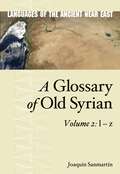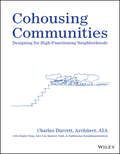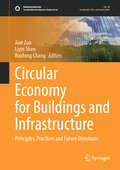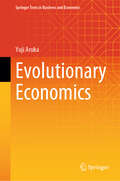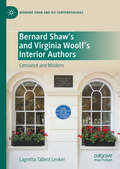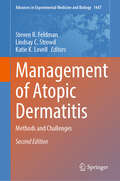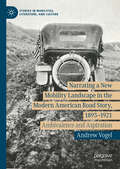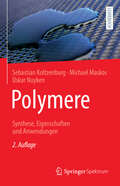- Table View
- List View
Agricultural Field Experiments: Design and Analysis (Books in Soils, Plants, and the Environment #Vol. 31)
by Roger G. PetersenThis text provides statistical and biometrical procedures for designing, conducting, analyzing and interpreting field experiments. It addresses the most important research topics in agriculture, including agronomy, breeding and pasture trials; farming systems research; and intercropping research.
Vitamins In Foods: Analysis, Bioavailability, and Stability (ISSN)
by George F.M. BallTo achieve and maintain optimal health, it is essential that the vitamins in foods are present in sufficient quantity and are in a form that the body can assimilate. Vitamins inFoods: Analysis, Bioavailability, and Stability presents the latest information about vitamins and their analysis, bioavailability, and stability in foods.
Encounters with Chaos and Fractals (Textbooks in Mathematics)
by Denny GulickRevised and updated, this second edition provides an accessible introduction to both chaotic dynamics and fractal geometry for readers with a calculus background. This edition contains new and expanded material on fractals that illustrates how to obtain computer renderings of them and covers Julia and Mandelbrot sets. It also includes a substantial number of new exercises at the end of each section and MATLAB programs in the appendix, with selected solutions at the back of the book.
Game Theory for Wireless Communications and Networking (Wireless Networks And Mobile Communications Ser.)
by Yan Zhang Mohsen GuizaniThis comprehensive technical guide explains game theory basics, architectures, protocols, security, models, open research issues, and cutting-edge advances and applications. Describing how to employ game theory in infrastructure-based wireless networks and multihop networks to reduce power consumption, it facilitates quick and easy reference to related optimization and algorithm methodologies. The book explains how to apply the game theoretic model to address resource allocation, congestion control, attacks, routing, energy management, packet forwarding, and MAC.
Cognitive Radio Networks: Efficient Resource Allocation in Cooperative Sensing, Cellular Communications, High-Speed Vehicles, and Smart Grid
by Tao Jiang Yang Cao Zhiqiang WangResource allocation is an important issue in wireless communication networks. In recent decades, cognitive radio-based networks have garnered increased attention and have been well studied to overcome the problem of spectrum scarcity in future wireless communication systems. Many new challenges in resource allocation appear in cognitive radio-based networks. This book focuses on effective resource allocation solutions in several important cognitive radio-based networks, including opportunistic spectrum access networks, cooperative sensing networks, cellular networks, high-speed vehicle networks, and smart grids.
Simplified LRFD Bridge Design
by Robert H. Kim Jai B. Kim Jonathan R. EberleHelping readers prepare for the civil and structural PE exam, this book presents numerous design examples that serve as a comprehensive, step-by-step guide to basic bridge design using the AASHTO LRFD Bridge Design Specifications, Fifth Edition. It offers a simplified explanation of load resistance factor design (LRFD) method-based bridge design principles and lists the AASHTO reference section numbers alongside formulas and where topics are introduced, to refer the reader to the primary source material. This is a valuable reference for civil engineering students as well as for practicing engineers.
Wine Microbiology: Science and Technology (ISSN)
by Claudio Delfini Joseph V. FormicaThis volume applies an inductive experimental approach to recognize, control and resolve the variables that effect the wine-making process and the quality of the final product - focusing on the grape variety-yeast interaction controversy. It contains over 300 drawings, photographs and photomicrographs that illustrate the diagnostic morphology of wine yeast and bacteria used to track wine spoilage and related problems.
Application of Stress-Wave Theory to Piles: Quality Assurance on Land and Offshore Piling
by Sussumu Niyama Jorge BeimThis work collates the topics discussed in the sixth International Conference on land and offshore piling. It covers topics such as: wave mechanics and its application to pile mechanics; driving equipment and developments; and pile integrity and low strain dynamic testing.
Generalized Linear Mixed Models: Modern Concepts, Methods and Applications (Chapman & Hall/CRC Texts in Statistical Science)
by Walter W. StroupWith numerous examples using SAS PROC GLIMMIX, this text presents an introduction to linear modeling using the generalized linear mixed model as an overarching conceptual framework. For readers new to linear models, the book helps them see the big picture. It shows how linear models fit with the rest of the core statistics curriculum and points out the major issues that statistical modelers must consider.
Event Mining: Algorithms and Applications (Chapman & Hall/CRC Data Mining and Knowledge Discovery Series #38)
by Tao LiWith a focus on computing system management, this book presents a variety of event mining approaches for improving the quality and efficiency of IT service and system management. It covers different components in the data-driven framework, from system monitoring and event generation to pattern discovery and summarization. The book explores recent developments in event mining, such as new clustering-based approaches, as well as various applications of event mining, including social media.
At-Risk Youth: A Comprehensive Response
by J. Jeffries McWhirter Benedict T. McWhirter Ellen Hawley McWhirter Anna Cecilia McWhirterThis text provides the conceptual and practical information on key issues and problems that you will need to prepare effectively for work with at-risk youth. Each chapter has resources that direct you to interesting and informative You Tube, TEDTalk, and research sites to expand upon and illustrate the written information. The authors describe and discuss the latest research-supported, evidence-based prevention and intervention techniques that will help you perform your job successfully and improve the lives of young people at risk.
Basic Spanish for Medical Personnel
by Ana C. Jarvis Raquel LebredoAs a key component of The Basic Spanish Series, BASIC SPANISH FOR SPANISH FOR MEDICAL PERSONNEL, Enhanced Second Edition, is a communication manual designed to serve those in the medical professions who seek basic conversational skills in Spanish. Written for use in two-semester or three-quarter courses, this worktext presents everyday situations that medical students, pre-professionals, and professionals may encounter at work settings such as hospitals, emergency rooms, doctors' offices, and clinics when dealing with Spanish-speaking patients and personnel in the United States. BASIC SPANISH FOR SPANISH FOR MEDICAL PERSONNEL, Enhanced Second Edition, introduces essential medical vocabulary, practical reference information, and medical notes written from a cross-cultural perspective. It provides students with opportunities to apply, in a wide variety of practical contexts, the grammatical structures presented in the corresponding lessons of the BASIC SPANISH core text.
Behavior Management: From Theoretical Implications to Practical Applications
by John W. MaagBehavior management isn't about providing students with stickers when they exhibit appropriate behaviors -- it entails much more. Authored by nationally recognized scholar and behavioral consultant Dr. John W. Maag, this book focuses primarily on students' observable behaviors and the environmental factors that affect their expression. As Maag points out, behavior management is probably one of the most misunderstood concepts in education. Written in an accessible style, this book demystifies stereotypical beliefs and misconceptions regarding the use of reinforcement, punishment, and self-control. Maag offers clear, yet detailed descriptions of proven intervention techniques, supplemented by step-by-step guidelines, real-life examples, sample forms, and visuals that assist you in implementing these techniques in the classroom. Although the techniques described are based on a sound theoretical and empirical foundation, the author limits the use of technical jargon.
Principles of Macroeconomics
by N. Gregory MankiwGain a strong foundation in macroeconomics with today's most popular economics text, trusted by students worldwide -- Mankiw's PRINCIPLES OF MACROECONOMICS, 10E. Using a clear, inviting writing style, this edition focuses exclusively on content to help you better understand the world and economy in which you live. You become a more astute participant in today's economic environment as you learn the potential and limits of economic policy. The latest examples and learning features bring macroeconomic principles to life as author Gregory Mankiw puts himself in the position of someone seeing economics for the first time. Dr. Mankiw's goal is to emphasize the material you will find most relevant and interesting as you study macroeconomics. MindTap digital resources, Aplia digital homework solution and author videos are also available to help you further master key macroeconomic principles.
Von einem, der auszog, das Staunen zu lernen: Große Figuren und großartige Meilensteine in der Geschichte der Wissenschaften
by Ernst Peter Fischer„Wer sich nicht mehr wundern und nicht mehr staunen kann, der ist sozusagen tot und sein Auge erloschen“, hat Albert Einstein einmal geschrieben, und diese Worte haben einen Knaben ermutigt, sich in die Welt der Wissenschaft zu begeben, um hier das Staunen zu lernen. Er wollte und will mit den Wundern der Wissenschaft leben, die den Menschen das Dasein erleichtert und ihr Weltbild ausschmückt. Aus seinem Leben wird hier erzählt und wie er sich in diese faszinierende Sphäre des Geistes hineinträumt. Dabei entsteht ein Roman der Naturwissenschaften, der von den Überraschungen im Innersten der Dinge handelt, die dort zu erleben sind und sich auf die Bedingungen der menschlichen Existenz auswirken. Der Roman stellt in persönlichen Begegnungen und Gesprächen Akteure auf dem Feld der Forschung vor, die nicht nur den Atomen, sondern zum Beispiel auch dem Geheimnis des Lebens und dem Erwachen der Intelligenz auf die Spur gekommen sind und heute versuchen, Maschinen damit auszustatten. Man versteht die Gegenwart besser, wenn man die historischen Erfolge der Wissenschaften kennt, die den modernen Alltag mit digitalen Medien dominieren und auf Fragen zum Klimawandel und zur Energieversorgung antworten können. In diesem Buch kann man beginnen, das zum Verstehen führende Staunen zu lernen, mit dem die Menschheit ihren eingangs von Einstein befürchteten Tod vermeiden und die Welt erleben kann.Ernst Peter Fischer beleuchtet spannend und unterhaltsam die Geschichte der Naturwissenschaft und ihrer Akteure.
Validity, Reliability, and Significance: Empirical Methods for NLP and Data Science (Synthesis Lectures on Human Language Technologies)
by Stefan Riezler Michael HagmannThis book introduces empirical methods for machine learning with a special focus on applications in natural language processing (NLP) and data science. The authors present problems of validity, reliability, and significance and provide common solutions based on statistical methodology to solve them. The book focuses on model-based empirical methods where data annotations and model predictions are treated as training data for interpretable probabilistic models from the well-understood families of generalized additive models (GAMs) and linear mixed effects models (LMEMs). Based on the interpretable parameters of the trained GAMs or LMEMs, the book presents model-based statistical tests such as a validity test that allows for the detection of circular features that circumvent learning. Furthermore, the book discusses a reliability coefficient using variance decomposition based on random effect parameters of LMEMs. Lastly, a significance test based on the likelihood ratios of nested LMEMs trained on the performance scores of two machine learning models is shown to naturally allow the inclusion of variations in meta-parameter settings into hypothesis testing, and further facilitates a refined system comparison conditional on properties of input data. The book is self-contained with an appendix on the mathematical background of generalized additive models and linear mixed effects models as well as an accompanying webpage with the related R and Python code to replicate the presented experiments. The second edition also features a new hands-on chapter that illustrates how to use the included tools in practical applications.
Consilience: Learning About Ourselves by Applying Indigenous Traditions to Western Music and Technology (Synthesis Lectures on Engineers, Technology, & Society)
by Ann-Perry Witmer Jess Mingee Bernhard D. ScullyThis series of essays, written by scholars and practitioners of engineering and music after visits to indigenous communities in Bolivia and Sierra Leone, illustrate the experiences, conversations, and insights that arose from consilient research. As the authors and contributors dive more deeply into each other’s Western traditions of expertise, a surprising commonality emerges between music and technology – a commonality rooted in ignorance toward the power of indigeneity. This is an unexplored area of inquiry in both engineering and music. Each discipline follows rigorous traditions in Western academic institutions that have not only disregarded but have demeaned ancestral and indigenous traditions. By bringing together diverse artists and engineers, this exploration examines how engaging with non-Western knowledge can alter the understanding of Western experts in any field.
A Glossary of Old Syrian: Volume 1: ʔ – ḳ (Languages of the Ancient Near East)
by Joaquin SanmartínA Glossary of Old Syrian: ʔ – ḳ is the first of two volumes aimed at the completion of a lexicographical index of the Old Syrian linguistical continuum. This glossary gives a picture, or map, of the Old Syrian lexicon as it can be extracted and reconstructed from the available sources, from the (Old Akkadian-)Eblatic through the Old and Middle Babylonian corpora.Old Syrian can be defined most appropriately as a diachronically conservative, geographically pluricentric, and pragmatically multilayered linguistic cluster. Therefore, the present work pays special attention to the distribution of lexical data along diatopic and diastratic criteria. In view of the enormous amount of material and the dispersion of the data, this glossary focuses on the most representative textual corpora of the Old Syrian linguistic landscape. The bibliographical references are kept deliberately succinct and as a rule, restricted to the classic works that may be easily found in every Assyriological or Semitic library, public or private, and that will redirect the users to their sources. Since the Old Syrian lexicography remains uncertain, the leading interpretative opinions are included alongside the most relevant comparative Semitic material. A Glossary of Old Syrian offers a clear picture of the current state of this field and is intended to serve as a reference work in support of future study.
Cohousing Communities: Designing for High-Functioning Neighborhoods
by Charles DurrettExplore a groundbreaking and holistic new approach to designing community-first neighborhoods In Cohousing Communities: Designing for High-Functioning Neighborhoods, distinguished architect and affordable housing advocate Charles Durrett delivers a complete, start-to-finish guide for designing anything where the emphasis lies with the community. This book describes the consequential role that architecture and a healthy design process can play in the success of neighborhoods, churches, towns, and more. It’s an inspiring collection of ideas that prioritize high-functioning neighborhoods. In the book, the author draws on the success of hundreds of community-first projects to show readers how to design a project that addresses both timeless and modern challenges—from aging to climate change and racism—in its architecture and urban design. He compiles facts and concepts that are essential to the design of a high-functioning community, where people can participate in a way that reflects their values, improves their social connections, and retain their autonomy and privacy. Readers will also find: Ideas for town planning, street planning, and other town altering improvements Discussions of how developers can make better multifamily housing Explorations of how planners and politicians can make high-functioning neighborhoods a cornerstone of their community In-depth treatments of families who want to confirm that they’re choosing the right neighborhood Perfect for university students and professors who strive to see new ways to create neighborhoods, Cohousing Communities: Designing for High-Functioning Neighborhoods will also appeal to universities planning new neighborhoods for retired alumni or new housing for students and faculty. Praise for Charles Durrett and Cohousing Communities: “…Get and read Cohousing Communities… Read it from the front cover to the back cover. It’s The Bible of Cohousing. And, like The Bible, it needs to be STUDIED not just read. Mark it up w/ your questions. Highlight, underline, write in the margins, fold the corners… This way you will gather your understanding how building cohousing gets “done," create your pathway to “Getting It Built”… and, most importantly get everyone on the same page for working together.” -- Ann Zabaldo, Executive Director, Mid Atlantic Cohousing
Circular Economy for Buildings and Infrastructure: Principles, Practices and Future Directions (Sustainable Development Goals Series)
by Liyin Shen Jian Zuo Ruidong ChangThis edited volume covers theoretical and practical aspects of circular economy in building development, offering chapters dealing with topics such as material design, affordability of housing development, waste management and recycling, smart metering, and more. A particular focus is placed on various stakeholders’ points of view. The book's chapters are co-developed and contributed by multidisciplinary teams including both academics and industry practitioners. The case study-oriented approach taken here helps to facilitate the reader's understanding of how building sustainability can be achieved in the context of circular economy. The building industry has significant environmental, social and economic impacts. As one of the biggest energy consumers and carbon emitters, building sustainability has attracted wide attention globally. Building projects and their associated activities consume a large amount of energy, natural resources and water while producing a large proportion of wastes throughout their lifecycles. The traditional linear approach of “make, use and dispose” has been heavily criticized, whilst the circular approach has gained momentum. Indeed, circular economy has emerged as one of key principles to manage sustainability related issues by means of focusing on the circularity of resources as well as the cost implications.
Evolutionary Economics (Springer Texts in Business and Economics)
by Yuji ArukaThis textbook presents a new way to visualize or imagine the evolutionary architecture of economics, to judge both its practical outcomes and its ultimate value. Evolutionary economics employs an Aristotelian architecture. The cognitive value of this imagination[H1] must be directly relevant to the evolutionary theory and practice of designing the architecture of the economic system. Mainstream economics completely ignores design value in order to concentrate on the ideal, Platonic vision of the economy. The current system is no longer one that converges on a constant entity, because the system is constantly evolving. The advent of the digital economy is an indispensable next step, and computational power and algorithmic rationality are increasingly dominating the economic system—and complicating it. In today’s society, neither fault nor malice matters in the algorithmic or human system. There is little room left for the effective working of human reason. Correspondingly, the meanings of money, exchange, the market system, auctions, production, consumption, and the currency transaction system are poised to change. In most cases, there will be digital counterparts. A smart contract tied together with DLT, for example, makes it possible to design an economically well-behaved peer-to-peer (P2P) system, which ranges from the micromarket to the international currency transaction system. The introduction of this technology and its architectural design may suggest what a truly decentralized future entails. This change may also bring about a new understanding of existing social consensus and practice. Thus, the implementation of these considerations naturally leads to a new style of chapter structuring in this book, from the classical analytical approach to exploring computational methods and digital tools: in many cases, the problems presented in each chapter are combined with discussions of a respective computational method and its practical value.
Bernard Shaw’s and Virginia Woolf’s Interior Authors: Censored and Modern (Bernard Shaw and His Contemporaries)
by Lagretta Tallent LenkerVirginia Woolf and Bernard Shaw may be the odd couple of Twentieth Century modernism. Despite their difference in age (Shaw was twenty-six years older than Woolf), and public demeanor - Shaw sought public attention while Woolf shunned the spotlight - they actively held similar convictions on most of the pressing and controversial issues of the day. This book demonstrates that both engaged in social reform through the Fabian Society; both took public anti-war positions and paid dearly for it; both fought British censorship throughout most of their careers as writers; both sought to strengthen women’s rights; and both endeavored to revolutionize their respective art forms, believing that art could bring about positive social change. The main focus of the book, however, concerns how both also created interior authors - characters who write and who either self-censor their own works or highly publicized messages or are censored by their fellow characters. These fictional authors maybe considered reflections of their creators and their respective milieus and serve to illuminate the satisfactions and torments of each famous author during the writing process.
Management of Atopic Dermatitis: Methods and Challenges (Advances in Experimental Medicine and Biology #1447)
by Steven R. Feldman Lindsay C. Strowd Katie K. LovellThis new edition builds upon the foundational knowledge covered in the first edition, covering the epidemiology, pathogenesis, and clinical presentation of atopic dermatitis in both pediatric and adult patients. It provides an overview of the mechanism and presentation of atopic dermatitis and focuses on the management methods experienced dermatologists have used to successfully manage atopic dermatitis. The book includes new chapters describing the special considerations for atopic dermatitis in skin of color patients, dedicated chapters on topical and oral prescription management reflected the latest FDA-approved treatments, and also a chapter covering the updated guidelines from the American Academy of Dermatology. A final chapter includes updates on the future of atopic dermatitis treatment. This book provides physicians with insights into the management of atopic dermatitis, such as alternative treatments for pruritus, psychosocial impact on patients and families,assessing patient compliance, and patient resources.
Narrating a New Mobility Landscape in the Modern American Road Story, 1893–1921: Ambivalence and Aspiration (Studies in Mobilities, Literature, and Culture)
by Andrew VogelThis book examines travel narratives as a medium used by the American public to imagine and negotiate new ways to live in, move through, and share national space. Setting an array of archival material, including congressional deliberations, into analytical conversation with road stories by Walt Whitman, Paul Laurence Dunbar, Upton Sinclair, Emily Post, Zitkala-Ša, Henry Ford and many others, this book reframes our understanding of the origins of American automobility. The evidence gathered here sheds light on the processes by which the defining social infrastructure of the twentieth century came to be enacted, and also exposes the fraught debates and abiding misgivings that continue to roil infrastructure planning today. The insights captured in this study purposefully deepen our attention to questions of land use and collective responsibility at a moment when the ecological and social-justice consequences of American automobility must be thoroughly re-evaluated so that more conscientious mobility futures may be developed.
Polymere: Synthese, Eigenschaften und Anwendungen
by Sebastian Koltzenburg Michael Maskos Oskar NuykenAusgezeichnet mit dem Literaturpreis des VCIPolymere sind einzigartige Moleküle und weisen Eigenschaften auf wie keine andere Materialklasse auf dieser Welt. Sie begegnen uns im täglichen Leben nicht nur in Form der bekannten, großvolumigen Kunststoffe wie PE oder PP oder der vielen weiteren, zum Teil hochgradig angepassten Spezialpolymere, sondern auch in der Natur als polymere Biomoleküle wie beispielsweise DNA. Unser Leben wäre daher so, wie wir es kennen, ohne Makromoleküle nicht nur vollkommen anders, sondern biologisch gar nicht möglich.Dieses Lehrbuch beschäftigt sich daher umfassend mit der Synthese, der Charakterisierung, den Eigenschaften und den Anwendungen von Polymeren. Ziel ist es, breite Kenntnisse der Grundbegriffe der makromolekularen Chemie und der einzigartigen Eigenschaften dieser Verbindungsklasse zu vermitteln. Auch umweltrelevante Themen wie Biopolymere und Mikroplastik, die in einem zeitgemäßen Lehrbuch nicht fehlen dürfen,werden behandelt.Aufbauend auf den Grundkenntnissen der organischen Chemie und der Thermodynamik präsentiert das Buch ein leicht verständliches und dennoch tiefgehendes Bild dieser sehr dynamischen und immer wichtiger werdenden Wissenschaft in der Schnittmenge von Chemie, Physik, Ingenieurwissenschaften und dem Life-Science-Sektor. Das Verständnis des Textes können Leserinnen und Leser dieses Werkes am Ende eines jeden Kapitels durch eine Auswahl an Übungsaufgaben überprüfen.Beim Verfassen des Buches wurde großer Wert auf gute Lesbarkeit trotz der erforderlichen Detailtiefe gelegt – ein Buch, das sich für Studierende der Chemie und verwandter Studiengänge genauso eignet wie für den angewandten Naturwissenschaftler im industriellen Umfeld. Als erstes und bisher einziges Lehrbuch der Polymerchemie wurde daher bereits die erste Auflage dieses Werks 2015 mit dem Literaturpreis des Fonds des Verbandes der Chemischen Industrie ausgezeichnet.
